Rural Libraries Services for Older Adults: Summary of Findings
Survey identifies how 721 rural libraries are serving older adults in their communities
Each day roughly 10,000 Americans turn 65. How are rural libraries serving these older adults? To find out, I conducted a survey of rural libraries throughout 45 states and two Canadian provinces to see how rural libraries are serving the 65+ demographic in their communities.
The surveys from the 721 libraries submitted during a seven-week period in April and May in 2016 provide a snapshot. One hundred and thirty-three of the surveys were from library districts serving a population of 2,500 or less. Over 87% of the libraries surveyed that supplied information about their districts’ populations served 25,000 people or less.
Rural libraries work hard to provide library services to older adults in spite of their limited resources. Unsurprisingly, a recurring theme was the limitation imposed on the range of possible services offered due to lack of staff, limited opening hours, inadequate space and limited funding. Despite the numerous obstacles and limitations that rural libraries face, rural librarians show a creative and admirable resolve to provide quality services for older adults.
The following tables summarize the findings of this survey:
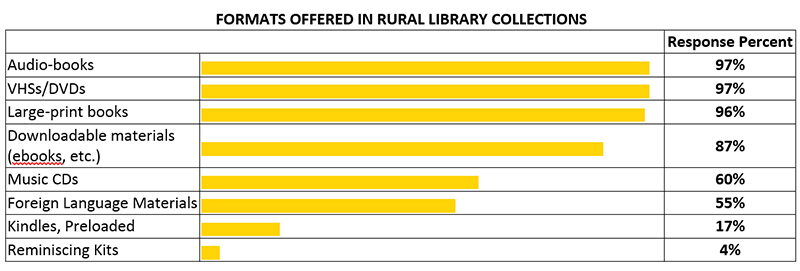
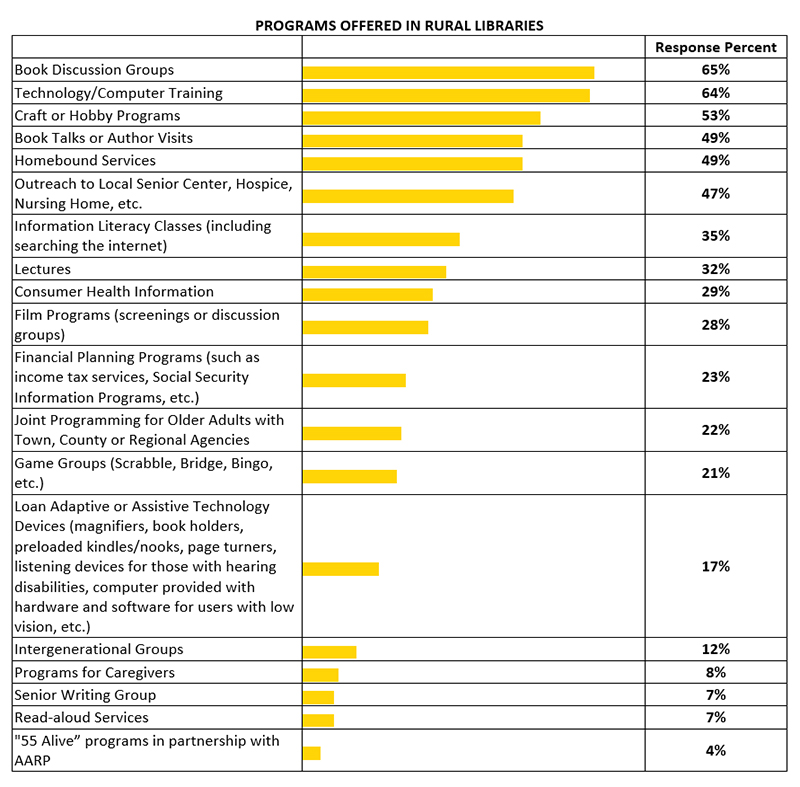

Eleven percent of rural libraries reported that they collected information about the 65+ demographic in their community. The main reasons of those reporting that they gathered information about older adults in their districts was to provide guidance when assessing their programming, selection of materials, outreach efforts, strategic planning, and reporting to board and regional and staff organizations. Rural libraries used a variety of methods to collect data: surveys, focus groups, assistance from local marketing classes and discussions with outside partners.
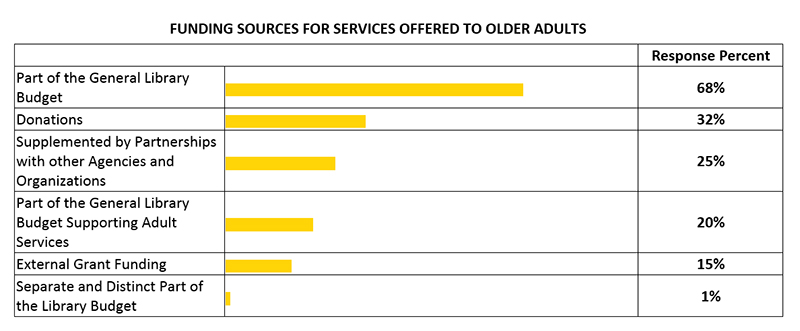
Library districts with smaller populations are more likely to fund services for older adults through the general library budget or through external sources (grants, donations, etc.). Library districts with larger populations tend to fund services for older adults from the general fund for adult services.
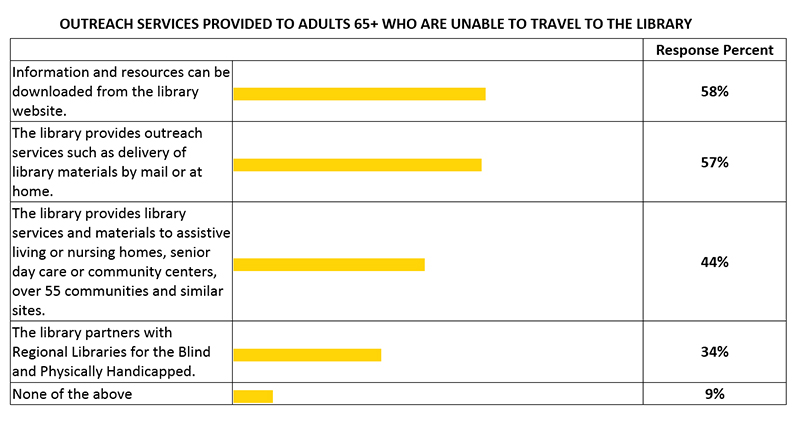
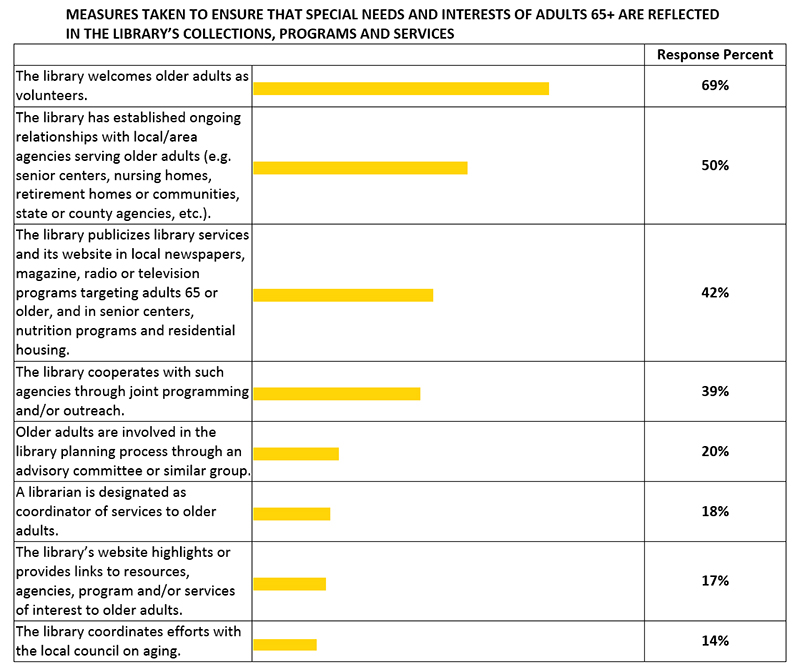
Rural libraries creatively coordinate efforts to serve older adults with a number of community organizations not exclusive to elderly populations, including institutions of higher learning, governmental agencies such as county health departments and village administrations, chambers of commerce, service groups, religious organizations and historical/genealogical societies. They often provided intergenerational programming with local schools and day cares.
Rural libraries additionally collaborated with organizations at the state level, such as state humanities councils, state libraries and state extension offices. Collaborations were even found at the national level between rural libraries and organizations such as dementia coalitions, AARP and the Veteran's Administration.
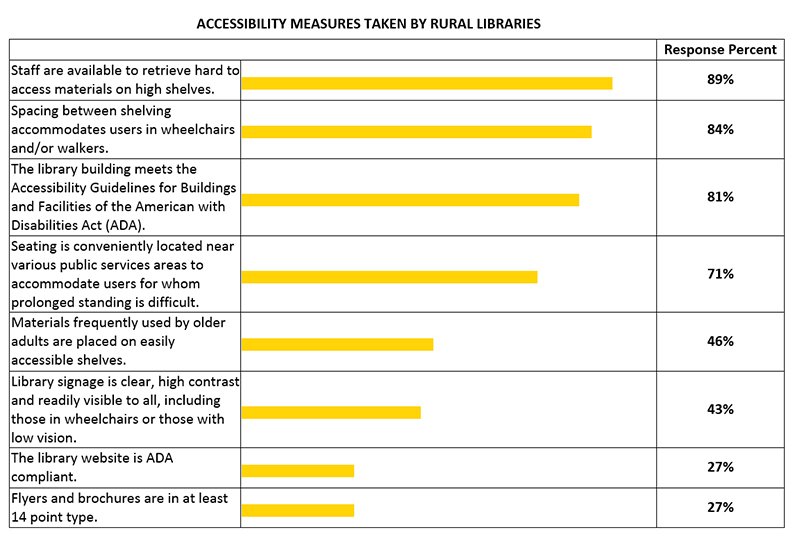
If you are a library looking to begin or expand your services to older adults, here are some resources to explore:
- Programming ideas, success stories and resources on the Older Adults & Seniors section of WebJunction
- Keys to Engaging Older Adults @ Your Library Toolkit (PDF) created by the American Library Association (ALA)
- Transforming Life After 50: A Resource for Libraries created by the California State Library
- Guidelines for Library and Information Services to Older Adults provided by ALA's Reference and User Services Association
More detailed information about this survey will be available in an article to be published in Public Library Quarterly in 2017.
